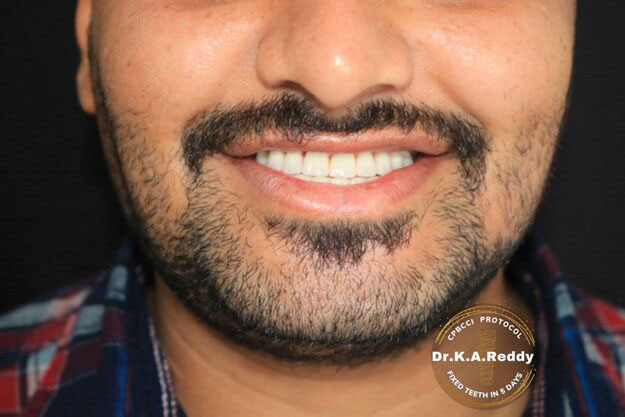Sinus Lift
MAXILLARY SINUS:
The human skull contains several air spaces called sinuses, which are connected to our air passages. They have no particular function, but it is theorised that they make the head lighter. Maxillary sinus is located in the upper jaw directly above the molar and bicuspid teeth.
SINUS LIFT:
Also called as Sinus elevation is a bone grafting procedure that builds bone volume below the maxillary sinus before a dental implant can be placed. When Upper back teeth are lost, bone in that area naturally shrinks or resorbs over time, Consequently sinuses expand to occupy the empty space where the bone used to be.
Because there is insufficient bone available to securely place the dental implant, your implantologist might suggest sinus lift in order to create space for placing additional bone in that area. Sinus lift requires a complex surgical procedure and waiting time for a final prosthetic work on implants in that region, it might last even up to a year.
Sinus lift also known as Maxillary sinus floor augmentation, is a surgical procedure intending to boost the quality of the bone in the distal half of the upper jaw. It is done by placing the bone grafts after lifting the lower Schneiderian membrane.
After the tooth loss in the upper premolar and molar area, the Alveolar process starts to redesign the vacant bare socket as it caves in during the healing process, leaving behind a toothless area called the Ridge. There will be loss in both width and height of the bone due to collapse, which ultimately results in bone deficiency, posing a challenge for implantation in that area, which is very crucial for teeth replacement. Main aim of the sinus lift procedure is to do bone grafts in the sinus area so that, it facilitates implantation procedure.
Descending of the Sinus can be caused not only due to long term tooth loss but also due to trauma, periodontal disease and it also continues to enlarge with age and an individual will have very little bone left in that area as he ages.
SINUS LIFT PROBLEMS:
It is a very intrusive measure which results in extensive inflammation and bruising. The others being:
- Tear in the Sinus membrane.
- Soreness and pain.
- Tissue or nerve damage.
- Oroantral fistula.
- Implant failure.
Recovery time will be around 6 to 8 months before implantation procedure can be attempted but, in very few cases sinus lift is accompanied immediately by implantation.
Sinus lift involves, repeated surgeries such as, a procedure to extract bone from the donor site for bone grafts, followed by a surgery to place the obtained graft material in the required area, succeeded by two more surgeries, one for the implant placement after 6 to 8 months and an other for the exposure of the implant.
In recent times sinus lift is considered as an outdated procedure as permanent teeth in 3 days cases are being preferred and also many alternatives to sinus lift procedure have evolved over time. Rehabilitation in the distal maxilla has always posed problems to the Implantologists due to the anatomy of the sinus, poor quality and quantity of bone and also due to improper access. To overcome this along with sinus lift and bone grafts other procedures like short implants have been proposed but they have their own limitations. The ultimate solution for this situation, which helps in restoring the upper posterior grinders is by placing Tubero Pterygoid Implants in the distal half of the upper jaw, which act as a substitute to avert sinus lift complications and bone grafts. The Basal implants and the Tilted Conventional Implants, with the “All on 6” concept, using the Tuberopterygoid Implants has a very high success rate with minimal complications as the Pterygoid bone is highly Mineralised and is not prone to resorption. The Tubero pterygoid Implants also cut down the fixed teeth on Implants cost by avoiding additional surgical procedures and also help in Immediate loading of teeth on Implants.
DISADVANTAGES OF SINUS LIFT:
Bone Grafts Failure: Sometimes bone grafts material does not integrate with existing bone due to poor blood supply.
H/O Repeated Sinusitis: Patients with a repeated history of sinusitis cannot subject them to this procedure.
Cost of Sinus Lift: Apart from the surgeon’s charges, bone grafts material is very expensive.
Very Invasive: Patients are often subjected to repeated surgeries.
Time Consuming: Often 6 months to 1 year, if the implant is placed along with sinus lift, the patient has to wait for 6 months before teeth are fixed. In cases where placement of implant is delayed (alveolar height less than 5 mm) 4 months for bone graft to osseo integrate and 6 months for implant osseo integration.




Please Visit Our Dental Implant Services in Hyderabad, India
19,000+
Dental Implants
370+
International Patients
25+
Years Of Experience
15+
Doctors and Staff
